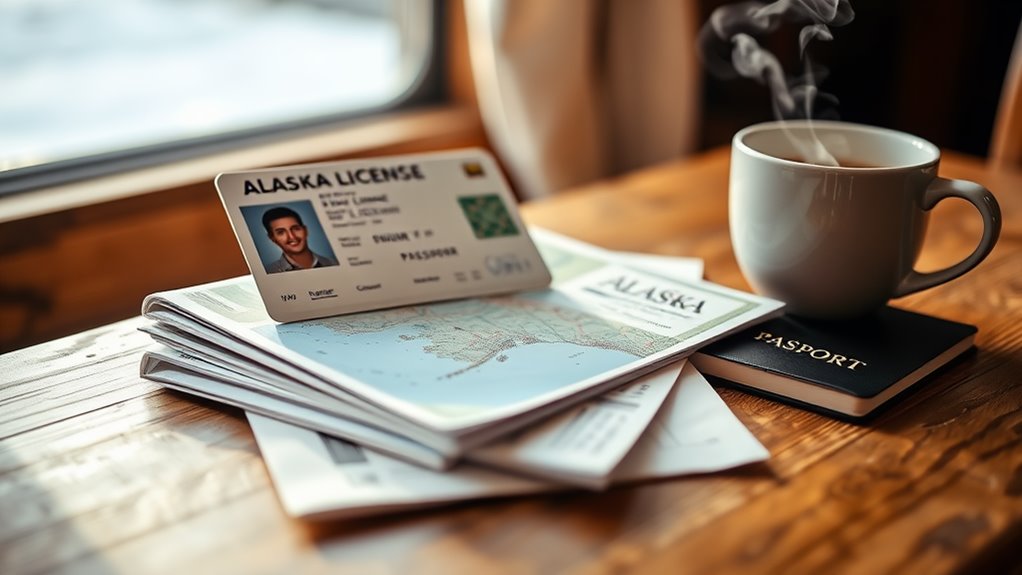When moving to Alaska, understanding the requirements for out-of-state drivers is vital. You'll need to provide valid identification and proof of residency, along with other important documentation. It's also essential to be aware of the application process and timelines involved in transferring your license. Knowing these details can help you navigate the change smoothly. So, what else should you keep in mind to guarantee a hassle-free experience?
Key Takeaways
- Out-of-state drivers must provide proof of identity, such as a birth certificate or passport, when applying for an Alaska driver's license.
- A valid out-of-state driver's license must be transferred within 90 days of moving to Alaska.
- Proof of residency, like a utility bill or voter registration card, is required for obtaining an Alaska driver's license.
- Drivers must pass a written knowledge test covering Alaska's driving laws as part of the application process.
- Maintaining valid liability insurance is essential and must be shown during law enforcement stops in Alaska.
Legal Identification and Documentation

When moving to Alaska or visiting for an extended period, you might wonder what legal identification and documentation you need to drive.
First, you'll need proof of identity, such as a U.S. birth certificate, passport, or military ID. If your name has changed, bring documentation like a marriage certificate or court order.
To drive in Alaska, ensure you have proof of identity like a birth certificate or passport, and documentation for any name changes.
You'll also need a secondary ID, like a state-issued driver's license or health insurance card, and proof of your Social Security number, which can be an original Social Security card. Additionally, if you hold a valid commercial driver's license from another jurisdiction, you may be exempt from licensing requirements in Alaska. It's important to note that SR-22 insurance may be required if you have certain driving violations.
Finally, provide evidence of residency, such as utility bills or an Alaska voter registration card.
Insurance Requirements and SR22 Filing
Understanding Alaska's insurance requirements is essential for out-of-state drivers, especially if you plan to stay for an extended period.
Here's what you need to know:
- Minimum Liability Coverage: $50,000 for bodily injury per person and $100,000 per accident, plus $25,000 for property damage.
- Proof of Insurance: Always carry it and show it to law enforcement when asked.
- State Mandate: Only liability insurance is legally required.
- SR-22 Filing: Required after serious infractions or insurance lapses, maintained for three years.
- Consequences: Driving uninsured can lead to fines, license suspension, and increased penalties if you fail to maintain an SR-22.
Being informed helps you navigate Alaska's unique insurance landscape effectively!
Application Timelines and Procedures
Steering through the application process for a driver's license in Alaska can feel overwhelming, but knowing the timelines and procedures will make it easier.
First, gather your primary documents, like a birth certificate or passport, and your Social Security card—no laminates allowed. New residents must transfer their out-of-state license within 90 days, and you'll need to pass a written knowledge test that covers Alaska's driving laws.
Fill out Application Form D1 and submit it in person at a DMV office; you can often schedule an appointment online.
Conclusion
As you prepare for your new adventure in Alaska, remember that meeting the requirements for your driver's license is just the beginning. With your proof of identity in hand and your residency documents ready, you'll feel the thrill of hitting the open road. But don't forget the ticking clock—90 days can fly by! Will you be ready to embrace the breathtaking landscapes and icy roads? The journey awaits, and it's time to make your mark in the Last Frontier.


